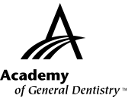|
Exercise No. 383
Subject Code: 153
Psychosocial, Anxiety, & Fear in Dentistry
The 15 questions for this exercise are based on the article, Psychosocial impact of anterior dental esthetics on periodontal health, dental caries, and oral hygiene practices in young adults, on pages 44-50. This exercise was developed by Robert A. Busto, DMD, MBA, FAGD, in association with the General Dentistry Self-Instruction committee.
|
 |
Reading the article and successfully completing the exercise will enable you to:
- understand the Psychosocial Impact of Dental Aesthetics Questionnaire (PIDAQ);
- understand that psychosocial factors influence the preventive and oral hygiene practices of dental patients; and
- improve identification of, and communication with, at-risk patients.
|

